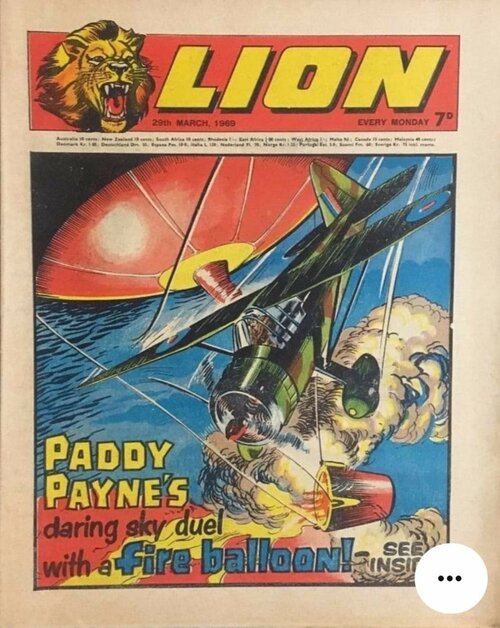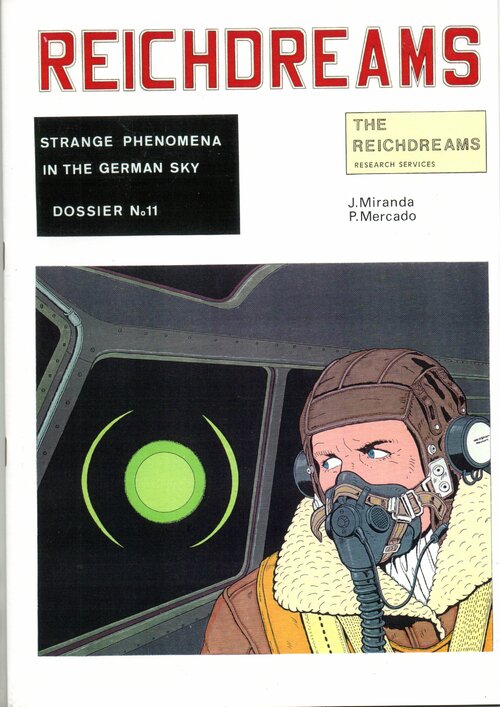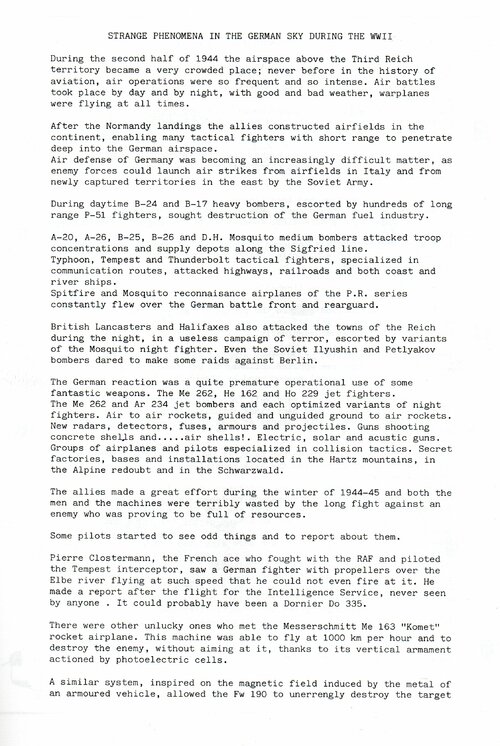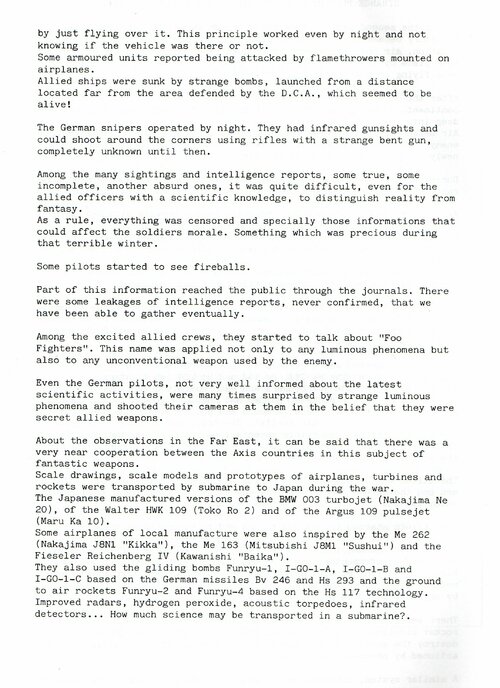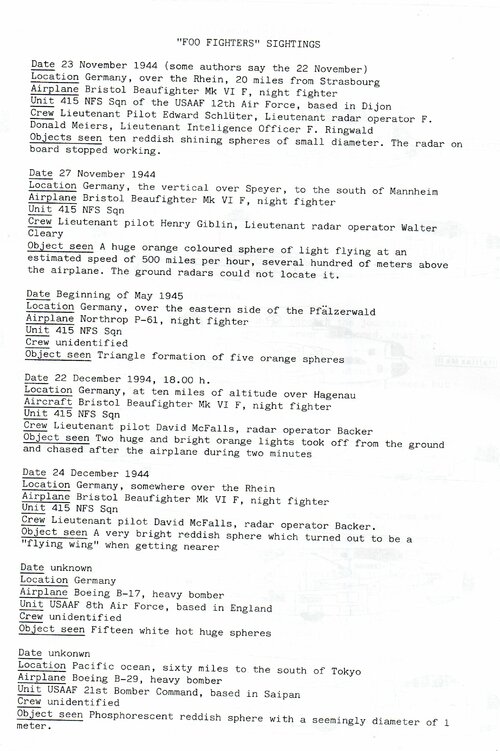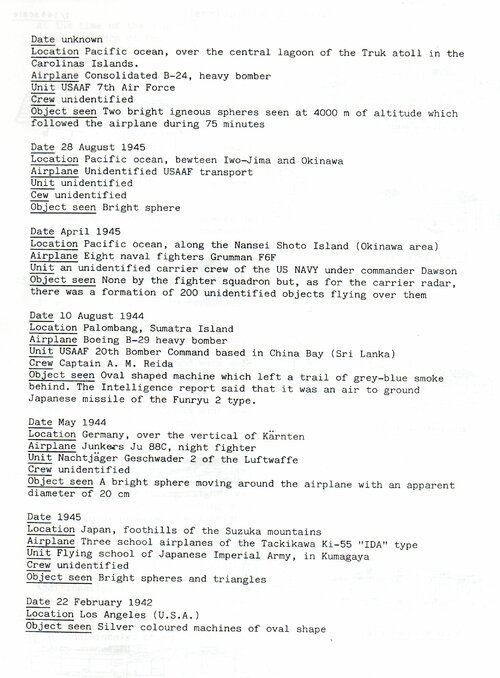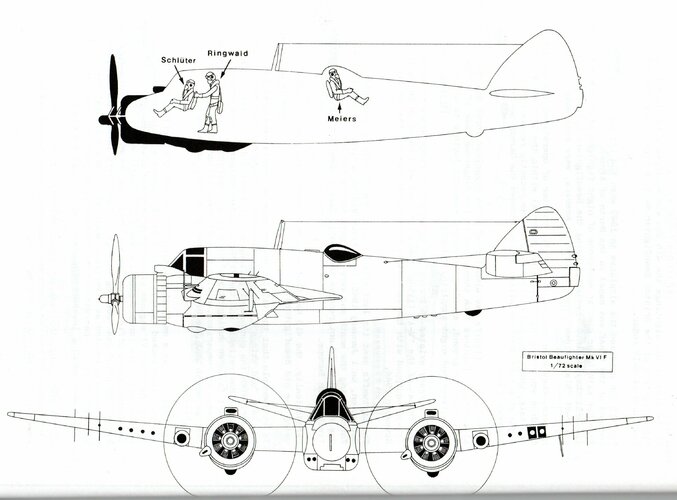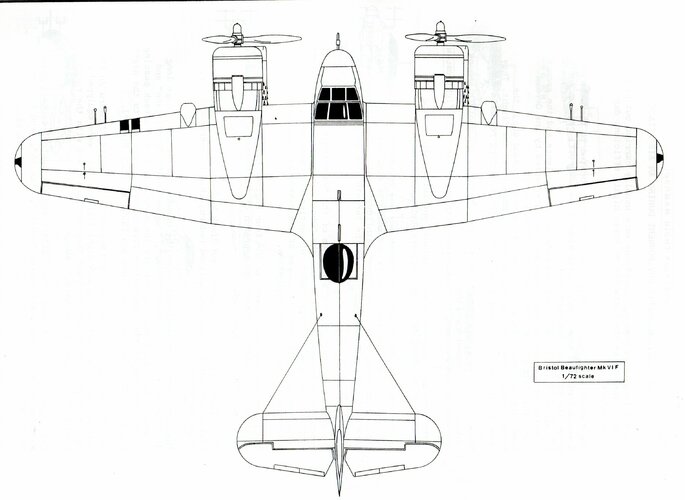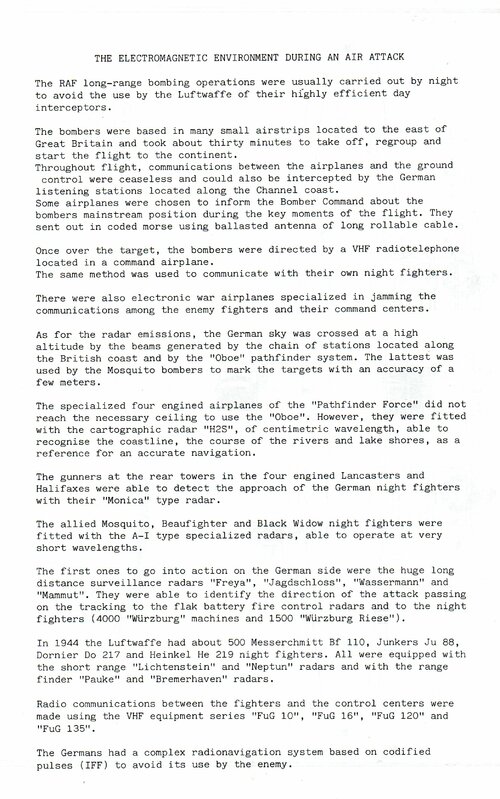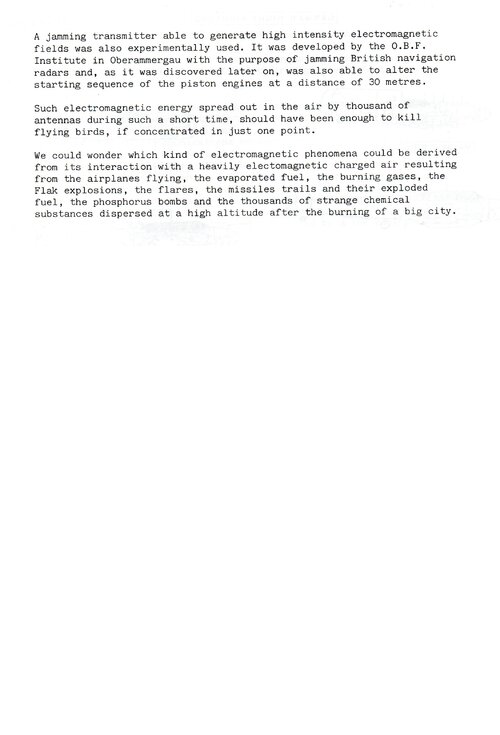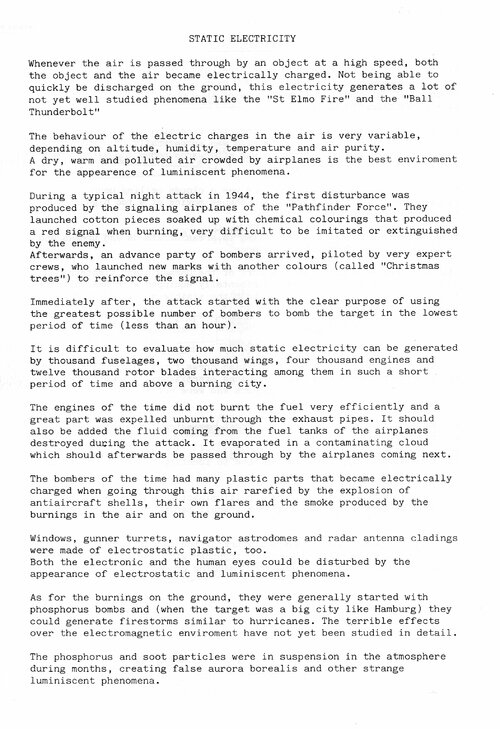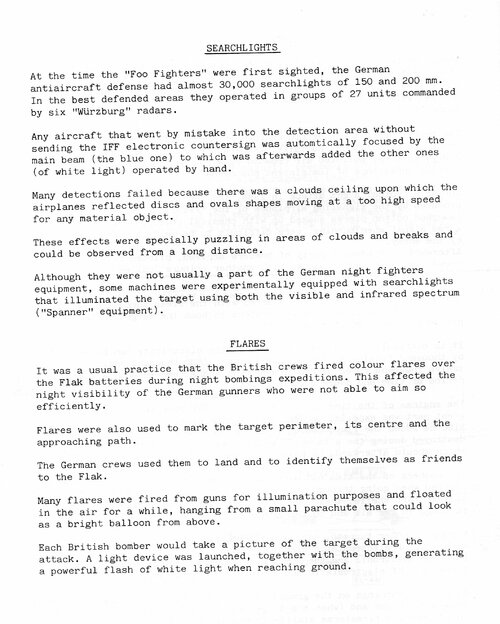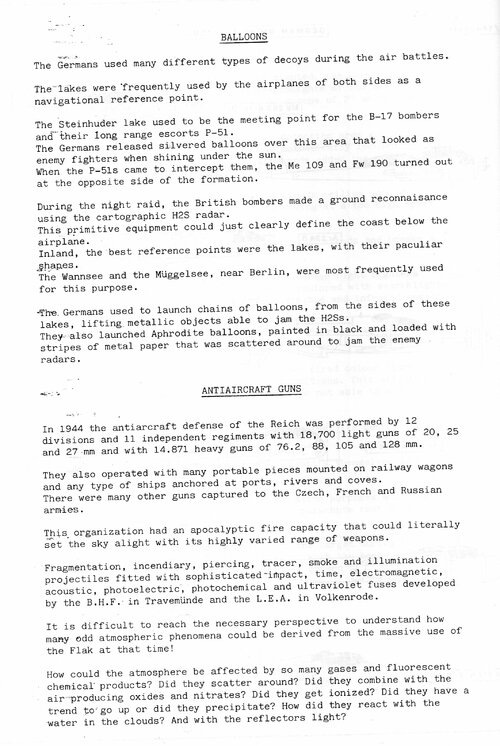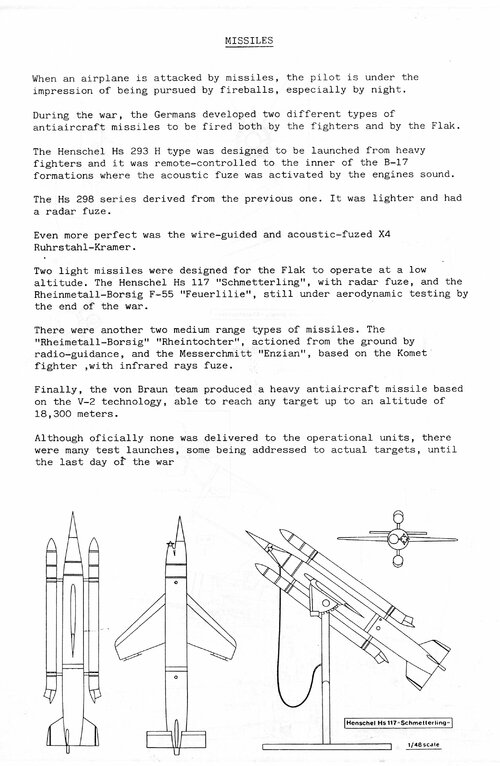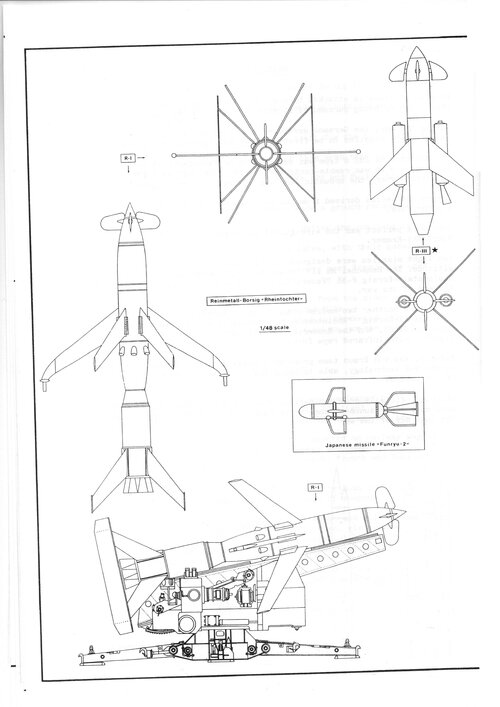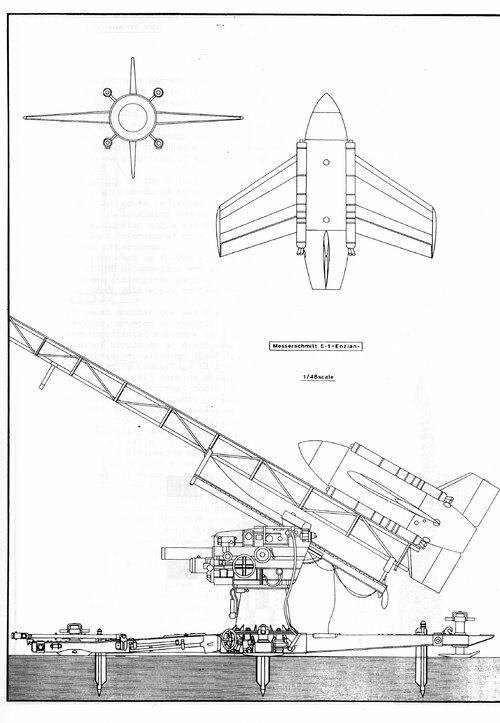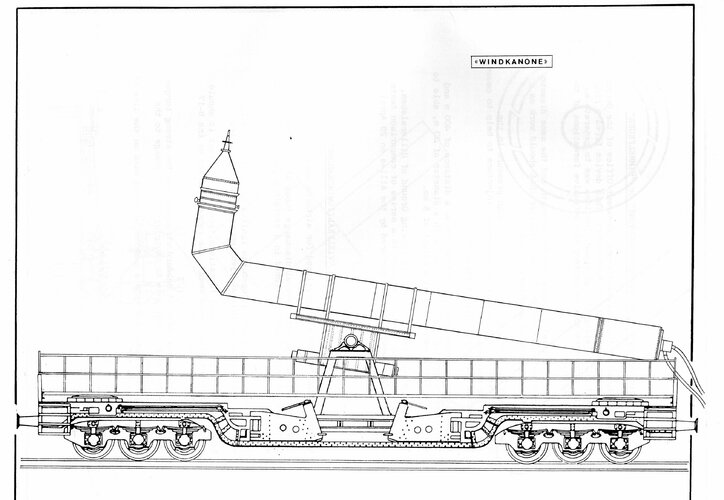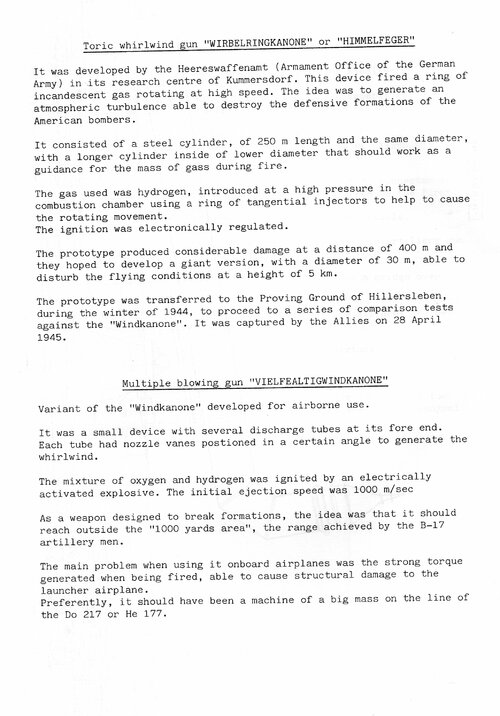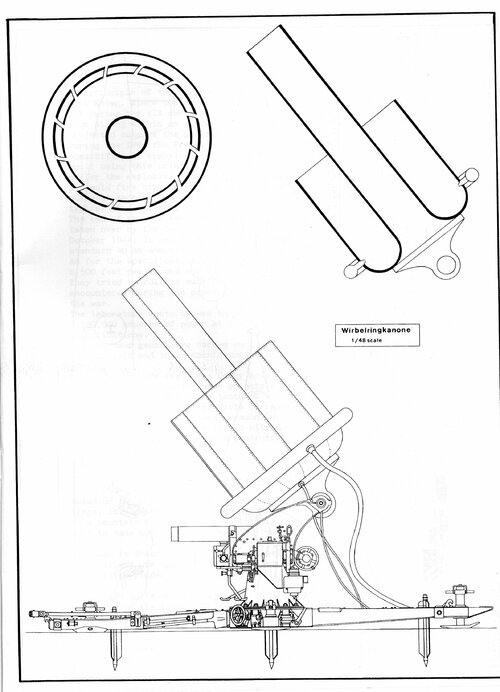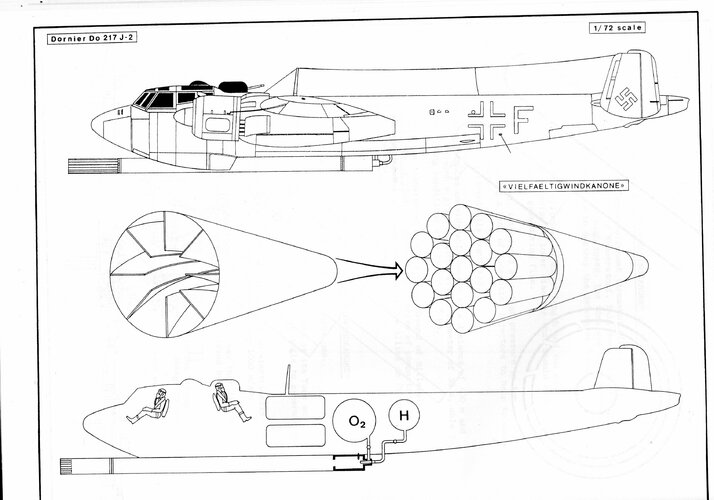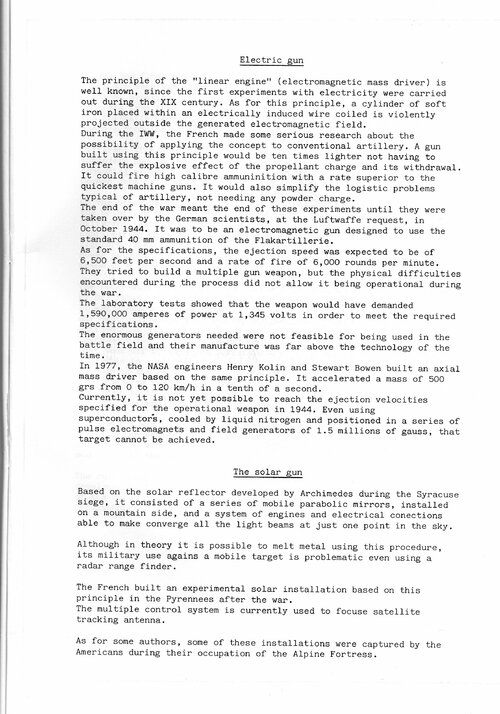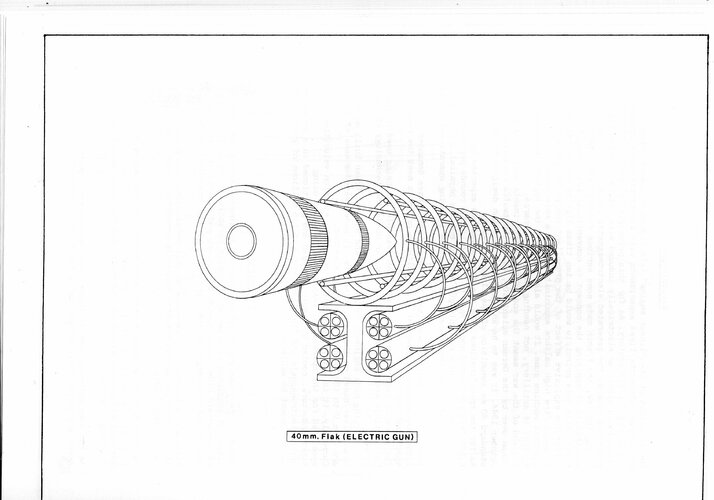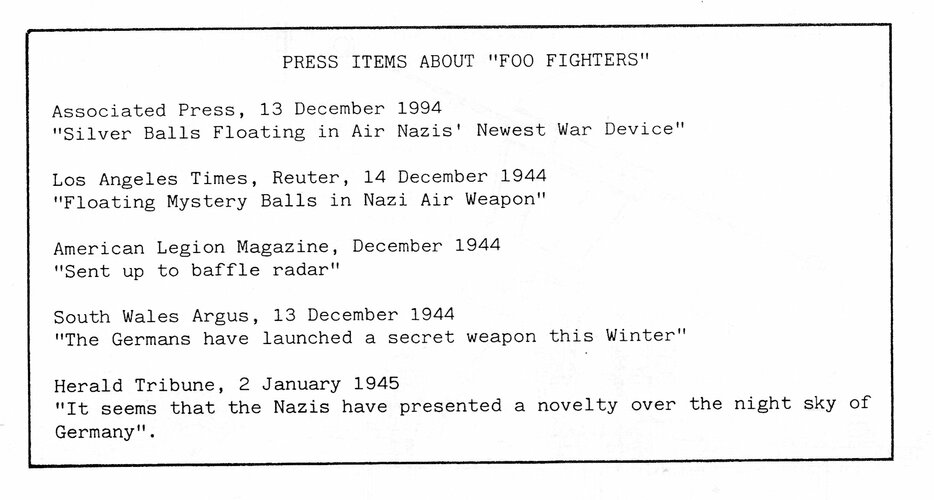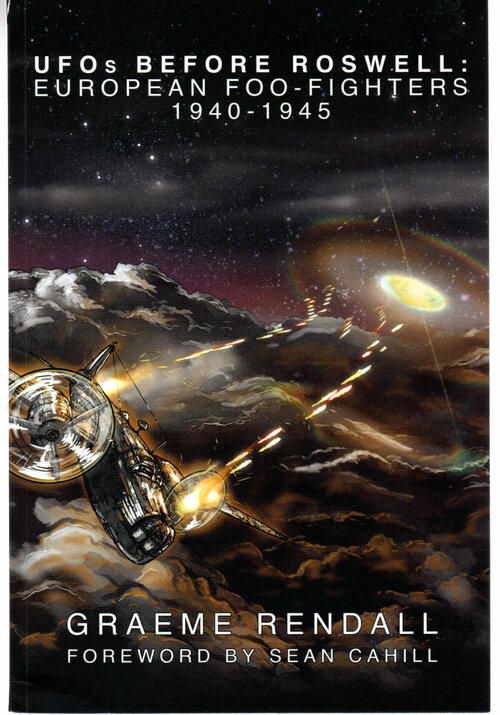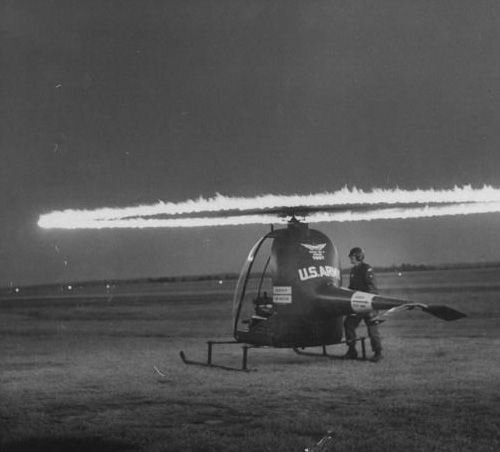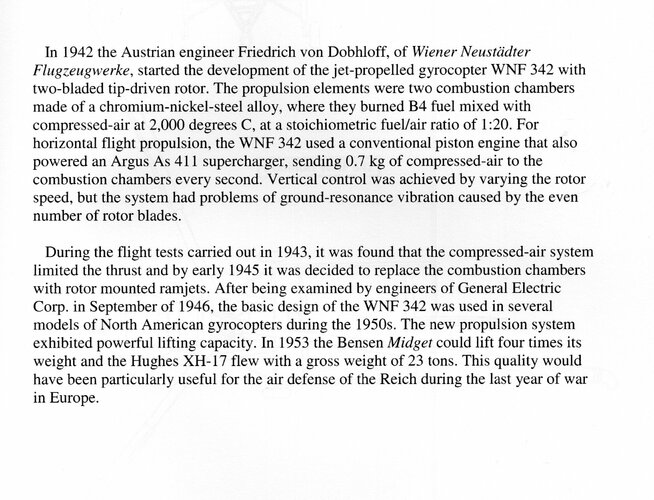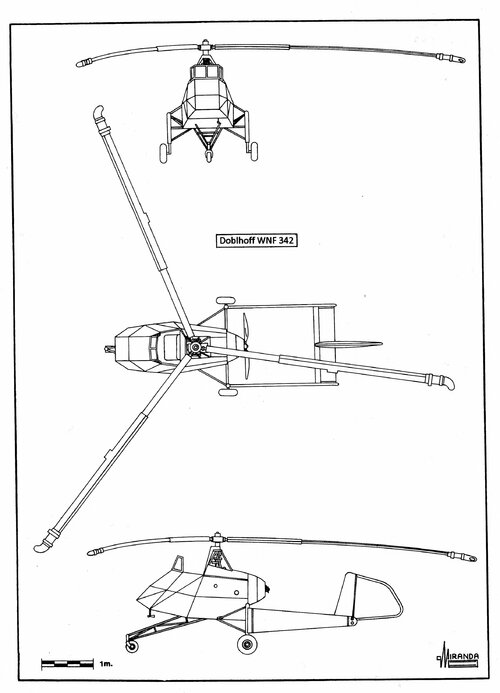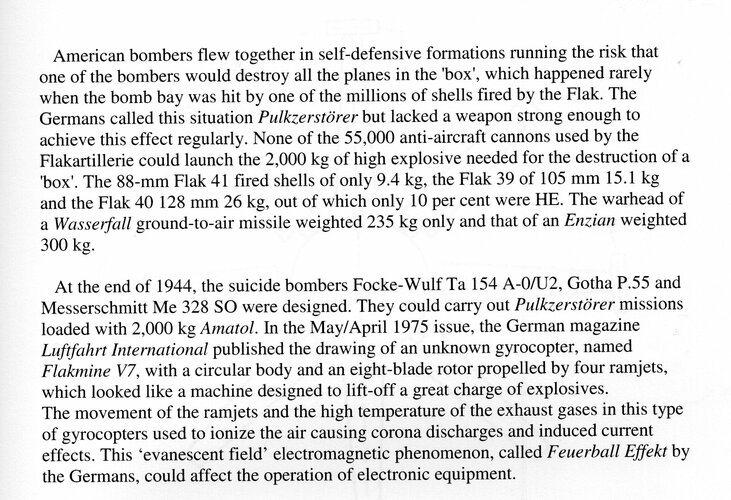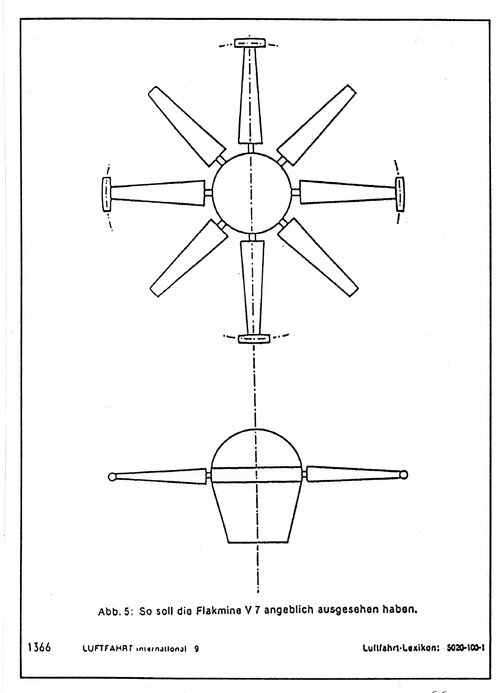By the end of 1943 the Mosquito NF.II of the 100 Group started to perform ‘Mahmoud’ missions escorting the bomber stream up to Berlin. They had an AI Mk IV radar that worked either in frontal search or in tail warning mode and was already superior to the Lichtenstein, an advantage that only increased along the rest of the war.
German casualties grew by the day, making it necessary to install Lichtenstein SN-2d or Neptun-R tail warning radar. This radar had serious difficulties to detect the Mosquito at medium range, due to its wood airframe.
The British bombers also started using the ‘Monica’ tail warning radar since the summer of 1943. When the presence of an aggressor was detected, pilots made a brusque turn or corkscrew to break contact and escape, in the case of bombers, or positioned himself behind the attacker, in the case of the fighters. In this type of fighting in the darkness, the advantage was on the side of the radar with wider angle. For this reason, some Bf 110 and Ju 88 carried additional antennae for the ‘Flensburg’ passive receiver in the wings. In 1945 both sides already used steerable parabolic antennae.
The ‘Neptun’ series of radars was designed to replace the ‘Lichtenstein’ that in 1944 already were neither immune to the new ‘Window’ nor to the British electronic countermeasures. But they still had detection problems at a range below 300 m due to the returned echo.
Shorter centimetric wavelengths would solve many of these issues, because they could be accurately focused and directed by a reflector small enough to be carried internally.
In August 1942 the Germans believed that the equipment able to operate on centimetric wavelengths could not be achieved until 1944. In December 1942 the Mosquito made the first accurate attack with the ‘Oboe’ system (an application of their IFF) although little afterwards the Germans could interfere it emitting on 1.25 m.
On 15 January 1943 the Technical Service of the Luftwaffe concluded that the centimetric wavelengths did not represent a military advantage that justified the effort to obtain them. That would have meant to retire all the available radio technicians from the war front, modify the production lines to manufacture new types of radio lamps, obtain bigger quantities of wolfram from the allied countries and delay the series production of the ‘Neptun’.
On 2 February a Stirling bomber of the Pathfinder Force, that marked targets for an incursion against Hamburg, was shot down by the flak over Rotterdam. The examination of the wreck showed that part of its electronic equipment operated on 9 cm wavelength…..it was one of the first H2S cartographic radars that could be recovered almost intact, as the self-destruction mechanism did not work.
It was based on the cavity magnetron technology, a casual discovery made by J.T. Randall and A. H. Boot in 1940. When the German technicians could make it work they were astonished by the quality of the images received through its small parabolic mirror. Geographical features or even the shape of ships and airplanes could be clearly distinguished at a time when the Lichtenstein SN-2 still operated on 3.30 m.
The German systems of manufacturing still took some time to adapt to the new technology and the overloaded electronic industry was only able to produce ten copies, denominated Berlin N-1, before the end of the war in Europe.
Meanwhile the Allied had been able to break the balance on their favour. The U-Boats were located and destroyed in the darkness, without any reaction from its ‘Metox’ to the 9 cm. emissions. When the new ‘Naxos’ were installed, the Allies started to emit on 3 cm and the slaughtering went on. In the air, the ‘Lichtenstein’ were positioned by the ‘Serrate’ devices of the Beaufighter and Mosquito and the German IFF was interfered by the ‘Perfectos’ system.
The ‘Oboe’ incursions resumed with the help of the 9 cm transmissions, impossible to interfere with the German equipment of the time. On 24 July 1943 the Bomber Command performed a mass attack on the heart of the Reich, using ‘Windows’, interference equipments installed in the aircrafts, electronic decoys and long range escort fighters Mosquito N.F. XII and N.F. XIII. The latest was equipped with nitrous-oxyde boost that also used successfully to catch the Fw 190 and Me 410 night intruders during the Steinbock Operation.
In May 1944 the new N.F. XIX received authorization to perform missions of free fighting over Germany, trying to attract the enemy night fighters with ‘Monica’ radar emissions, feigning to be a bomber. By the beginning of 1945, the N.F.30 came into operation with engines equipped with exhaust shrouds, designed for minimum IR emission and almost invisible in darkness. They were fast enough to hunt the Me 262 B-1a/U1 and the Fi 103 flying bombs.
Germany lost the initiative and was forced to adopt a survivor strategy based on antiradar techniques and equipments.
The old ‘Matratzen’ and ‘Hirschgeweith’ antennae were replaced by swivelling mountings ‘Panorama’ and parabolic mirrors ‘Parabolspiegel’.
Every detecting equipment was improved adding filters, Doppler devices, frequency switching devices - ’Bernhard ‘Eidechse’ ‘Feuerzange’ ‘Goldhammer’ ‘K-Laus’ ‘Kurmark’ ‘Laus’ ‘Mosaik’ ‘Nürnberg’ ‘Nürnburg’ ‘Reiss-Laus’ ‘Riese-Gustav’ ‘Schliebelaus’ ‘Stendal’ ‘Tastlaus’ ‘Taunus’ ‘Urechse’ ‘Wismar’ ‘Würzlaus’ - named ‘Flammen’ and complementary infra-red detectors and sound locators.
The airplanes and missiles were equipped with passive receivers of the emissions of Allied radars of the types ‘Naxos’, ‘Fishpond’, ‘Kleine Heidelberg’ ‘Postklystron’ and ‘Radieschen’. The U-Boats and surface vessels of the Kriegsmarine received the naval versions from these devices named ‘Metox’ ‘Bali’ ‘Cypern’ ‘Palau’ ‘Sumatra’ and ‘Timor’. To jam the radars of the Allied, aluminium bands similar to the ‘Window’ British system (named by the German ‘Düppelstreifen’) were also used. Besides being launched from bombers in the classic way, launch rockets of 86 mm (similar to the current Chaff) were designed for the Kriegsmarine under the name Spgr.L/4.8 ‘Kurhessen’. They surrounded the ship in a cloud of metallic strips when detected by enemy radar. The U-Boats used the ‘Aphrodite IV’ system (Fu MT1) since June 1943. They were radar decoy balloons coated with metallic painting that floated a few meters above the water surface anchored to a floating plate, producing a strong radar echo similar to that of the U-boat conning tower on British radar screens.
Another antiradar technique ‘Netzhemd absortion durch’ was the manufacturing of radar-absorbent materials (RAM). The first practical application consisted of coating the U-Boat snorkels with a special compound of rubber and carbon named ‘Sumpf’ that almost obliterated the radar profile. Its use was started in May 1944, with a plastic ‘Zelligelit’ coating against water and pressure effects.
Coatings ‘Tarnmatte’ and ‘Wesch’ were developed shortly afterwards for other parts of the submarine, like the deck and conning tower. The first one was a thick sheet of ‘Buna’ synthetic rubber that contained iron oxide powder used against the 9.7 cm wavelength of the H2S British radar. The second one was a carbonyl iron powder loaded rubber sheet, about 7.62 mm thick, with a resonant frequency at 3 GHz. The rest of the submarine hull was covered with ‘Alberich’ anechoic coating, 4 mm thick rubber called ‘Oppanol’ against the ASDIC sonar pulses.
There also existed an antiradar painting for airplanes, the ‘Schornsteinfeger’ developed in the BHF (Hochfrequenzinstitut) of Travemünde. A radar camouflage material consisting of a thick bituminous paint heavily loaded with carbon. When applied in thickness carefully calculated in relation to the radar frequency the arriving signal would be trapped within the dielectric material and its return energy damped out and transformed itself in heat. The painting was more efficient if applied over non-metallic structures predecessors of the current composite materials.
The most efficient device was the ‘IG-Jaumann’ developed by IG Farben. It consisted of 8 cm thick panels formed by 7 layers of conductive material plastic/carbon separated by layers of di-electric ‘Igelit’ polyvinylchloride. It was used against the wavelengths between 2 and 50 cm effectively reducing the reflectivity of -20dB over 2.15 GHz. However, it could only be manufactured in curved or straight panels, which made its use on aircrafts very difficult.


